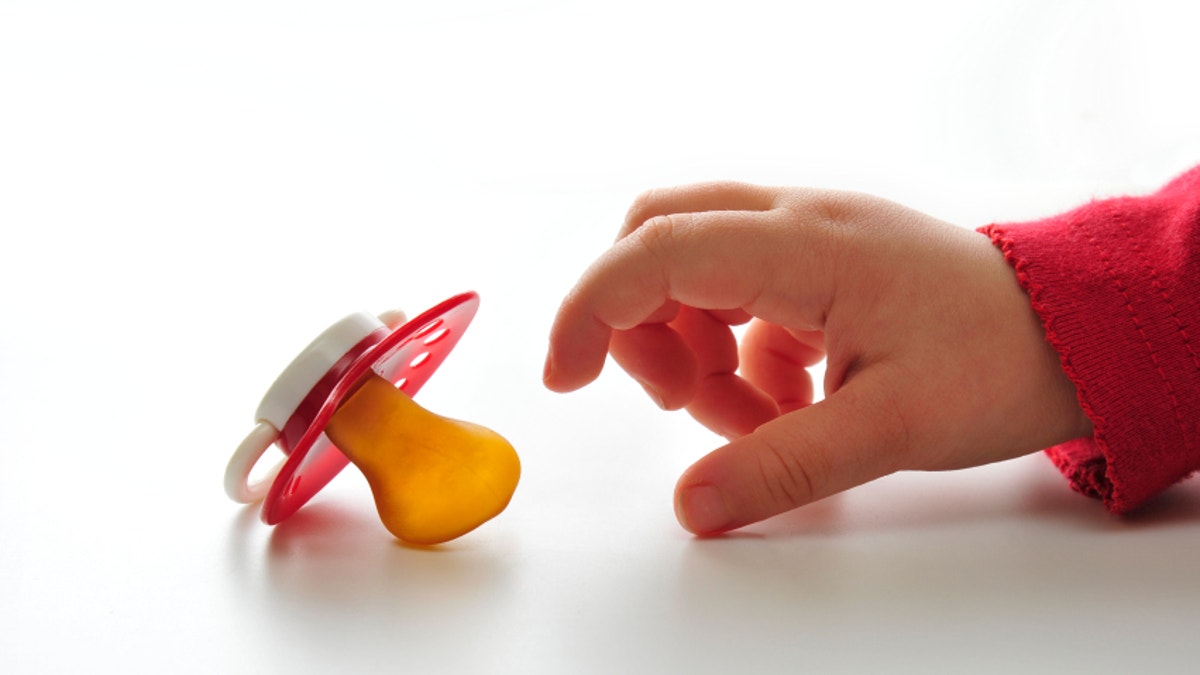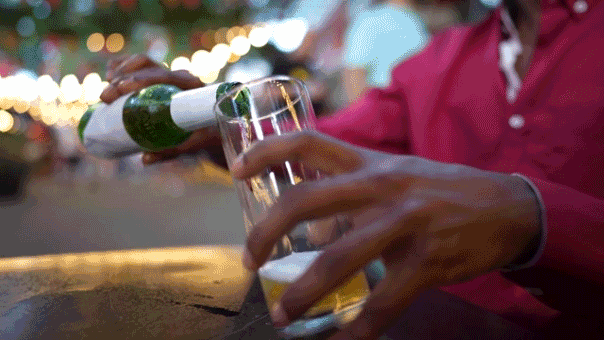
Children's dummy. Child taking the pacifier. ( )
Paci, binky, dummie. Whatever you call it, chances are your baby has one. And when that little sucker rolls under the crib, gets buried in the diaper bag, or your baby cries for it in the middle of the night, you scramble.
Most moms agree that pacifiers are one of the best ways to help your baby soothe and fall asleep. Yet experts say like anything else, using it comes with certain caveats.
From how to select, use and clean it, to how to get your toddler to give it up once and for all, find out everything you need to know about pacifiers.
Pacifier benefits
Although it’s not always in your control, using a pacifier is preferable over thumb sucking. Not only is it easier to wean from, but “they’re going to do damage to their skin and nails and get infections if they continue to put their hands in their mouth,” said Dr. Natasha Burgert a board-certified pediatrician in Kansas City, Mo.
Pacifiers not only soothe a crying baby, but studies show one of the most important benefits is that it may decrease the risk for Sudden Infant Death Syndrome (SIDS).
Contrary to what many experts say could cause nipple confusion or nipple preference, a pacifier can actually help facilitate breastfeeding.
“There’s no empirical evidence that nipple confusion exists,” Burgert said.
Using a pacifier can help to strengthen the jaw and make tongue coordination more organized. Particularly for premature newborns who have an uncoordinated suck and swallow reflex, a pacifier can make for an easy transition to the breast.
Nevertheless, if you’re concerned that introducing a pacifier will impact breastfeeding, it’s a good idea to hold off on using it until breastfeeding is established. Whether that’s two weeks or two months— it depends on you and your baby. Plus, a pacifier should never be used as a substitute for a feeding.
How to choose
There are more than a dozen pacifiers on the market, so deciding between the different types comes down to personal preference— both yours and your baby’s.
The round silicone types that are used in most hospitals are popular, since it’s the same shape as a breast nipple. If you’re bottle-feeding, every bottle system comes with a coordinated pacifier so that may be a wise decision too.
One thing that many moms don’t realize, however, is that there are different types of pacifiers for different ages.
“Although a baby may like one type, there are detriments to using a type of pacifier that is not made for his age,” Burgert said.
Not only can the wrong type affect his bite, but since pacifiers have different densities, there’s an increased risk that the pacifier could break and cause choking if you’re using an infant pacifier with a toddler, for example. Some, like the orthodontic-shaped pacifiers should only be used when the first teeth start to come in.
Nix the accessories
A pacifier clip can prevent the pacifier from falling or getting lost, but they can also wrap around your baby’s neck especially if it’s used in the crib. Plus, pacifiers with a small stuffed animal attached can make it difficult for your baby when it’s time to switch or wean.
“Use the straight up pacifier, no strings attached,” Burgert said.
Cleaning and care
At least once a week, inspect the pacifier for holes, cracks, and tears. Some pacifiers, like those that have an orthodontic nipple and separate shield, should be bent so you can thoroughly look for tears.
A study in the journal Pediatrics found that children whose parents “cleaned” their baby’s pacifier by sucking on it had a lower risk for asthma and eczema at 18-months-old than those who did not. Although the study shows that this may be effective, experts agree
it’s never a good idea to do so because it can transfer cavity-causing bacteria into your baby’s mouth. Although pacifiers don’t need to be sterilized, they should be cleaned weekly— or if they’re visibly dirty— with hot, soapy water.
Drawbacks
Using a pacifier after age two can cause misalignment of the teeth. Plus, babies who frequently used pacifiers had one-third more ear infections than those who nixed the habit at six months, according to a study in the journal Pediatrics.
Long-term pacifier use can also affect speech development. If a baby is trying to speak with a pacifier in his mouth, then he’s not learning the correct way to speak, said Dr. Carlo Reyes, a pediatrician and assistant medical director of the emergency medicine department at Los Robles Hospital in Thousand Oaks, Calif. On top of that, using a pacifier too much can cut into the time your baby should be talking.
How to wean
Experts say although six months is ideal, by age two, babies should kick the habit. Sure, your toddler will probably resist, but going cold-turkey is a good idea, Burgert said. Either way, make sure your toddler is part of the process. You can decide to tie the pacifier to a balloon, give it to a teddy bear or another baby, or pack it away in a special box.
“After those three bad days, they usually forget about it,” she said.







































